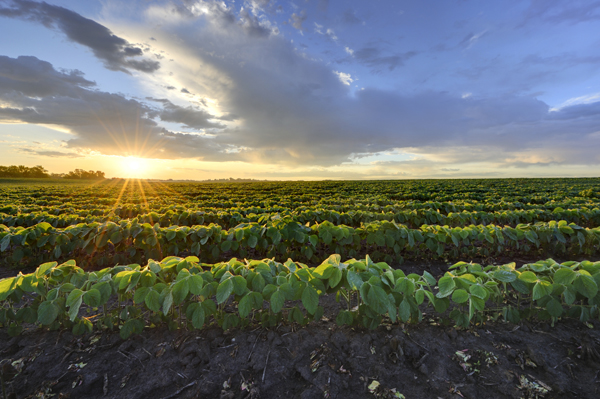2015 Projected Plantings: Beans Fill the Void? Not Necessarily.
 Following the last WASDE report from February 20th, analysts have been busy in their ongoing efforts to gauge the nation’s farmers’ cropping decisions. While this is no simple task, a few trends have emerged, and a clearer picture of the 2015 cropping landscape is emerging, with a few surprises.
Following the last WASDE report from February 20th, analysts have been busy in their ongoing efforts to gauge the nation’s farmers’ cropping decisions. While this is no simple task, a few trends have emerged, and a clearer picture of the 2015 cropping landscape is emerging, with a few surprises.
According to the 2015 Grain and Oilseeds Outlook report, also released February 20th, and the USDA’s chief economist Robert Johansson, farmers will be planting less of every crop in 2015. While many did expect producers to back off from the crops with more expensive inputs, and fill those acres with less expensive crops, it appears that they are instead scaling back across the full spectrum. Looking specifically at the numbers, the USDA expects planted acres of corn, wheat, and soybeans to total 228 million acres in 2015, down 3.1 million acres from 2014. This overall decrease doesn’t come as a surprise, given lower overall commodity prices.
Naturally, many reports predicted beans to fill the void, with their lower cost of production. Trade guesses as to 2015 soybean projections range from 82.1-88.3 million acres, that high being 4.8 million acres above the record high 2014 numbers. On average, trade projections stand at a 2.8 million acre average above 2014 numbers.
However, the Grain and Oilseeds Report surprised the market by totally dismissing those increased soybean acres predictions, and went one further in predicting even fewer acres of soybeans planted in 2015. According to John Newton at the University of Illinois Agriculture and Consumer Economics Department: “For 2015, USDA projects planted acres of soybeans at 83.5 million acres. If realized, this total would represent a 200,000 acre decline from 2014, and is significantly less than the average trade guess of 86.0 million acres. With respect to harvested soybean acres, the USDA projection is for 82.6 million acres, down 500,000 acres from 2014, but 2.7 million acres less than the average trade guess of 85.3 million acres.”
Never a dull moment to be had in the grain market, Newton goes on to point out that, despite the lower-than-expected projections for harvested soybean acres, the USDA also predicts yields above market expectations. “These two measures effectively offset, and the projected size of the soybean crop is only 56 million bushels below the average trade guess of 3.856 billion bushels,” he says. Analysts will continue to monitor the consumption pace of 2014-15 soybeans, and will be able to see a clearer picture when the USDA’s Prospected Plantings report is released on March 31st. In the meantime, beyond the decision about which crops to plant or not plant, weather will be a big variable in the next two months.
Are you concerned about what cropping decisions will be best for your land and farming operation? Let UFARM offer their expert advice—they are glad to hear your concerns and come up with a sensible solution for your land.
Sources consulted: Floyd, Allison. “Farmers Will Plant Less Acres in 2015.” Growing Nebraska. Growing America. 20 Feb. 2015. Web. 02 Mar. 2015. Newton, John. “Projected Soybean Plantings Are Surprisingly Low.” Farmdoc Daily. Department of Agriculture and Consumer Economics, University of Illinois Urbana-Champaign. 23 Feb. 2015. Web. 02 Mar. 2015. Potter, Ben. “Projected Soybean Acres Surprisingly Low.” Agweb. Farm Journal. Feb. 2015. Web. 02 Mar. 2015.

